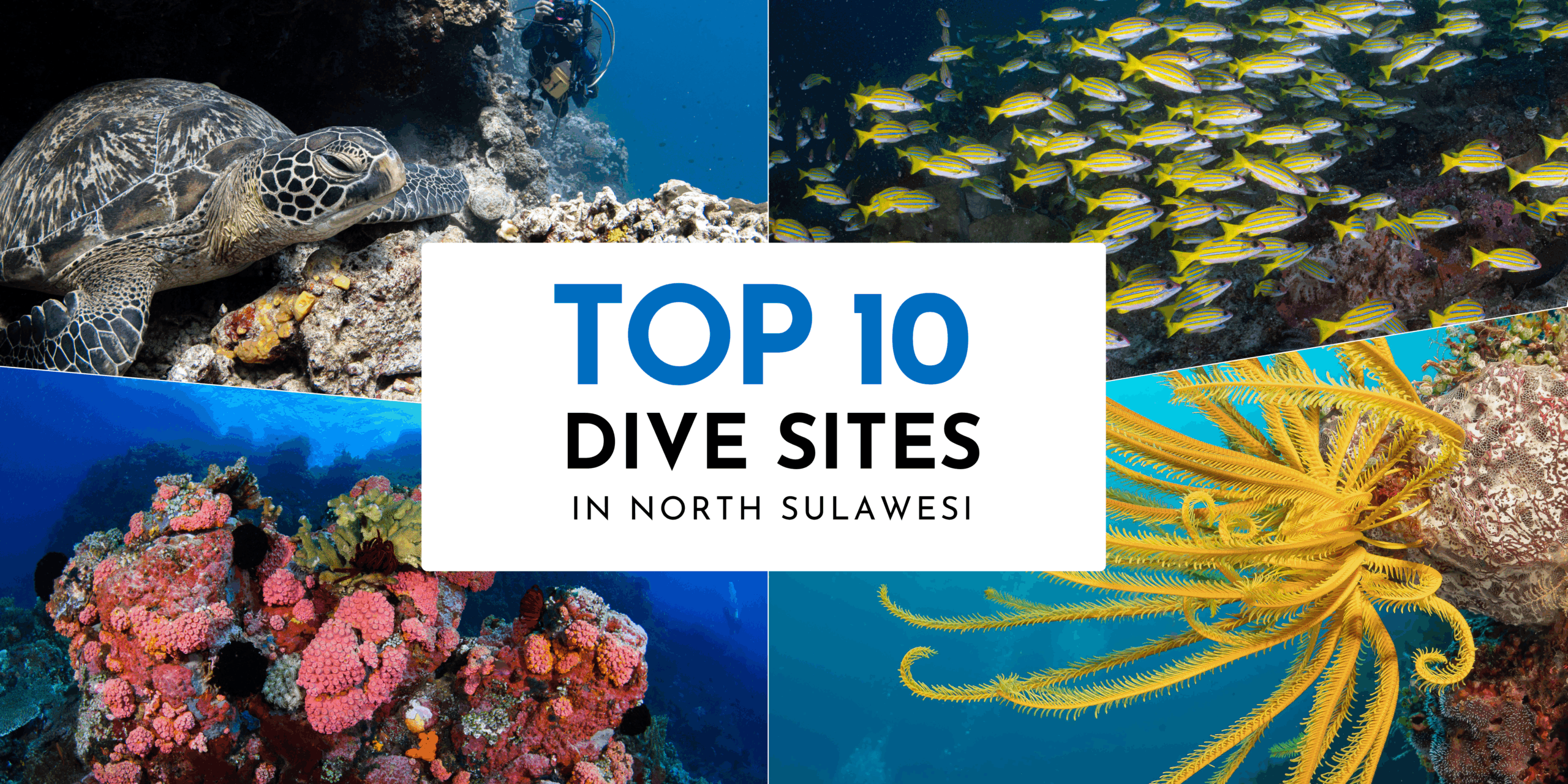8 Things You Never Knew About Banded Sea Kraits
Here at Murex Dive Resorts in North Sulawesi we are lucky enough to see banded sea kraits at many of our dive sites. We say “lucky” because despite many misconceptions and fears of snakes these are a quiet species and really quite intriguing.
In this edition of our Blog we dispel some common myths about banded sea kraits and take a look at some interesting facts that you might not know!
1. Five Names For One Species: Banded Sea Krait
While most people call this species the “banded sea krait”, it is also known as the “banded sea snake” or the “yellow-lipped sea krait”. It also has its scientific species name which is “Laticauda colubrine” which has given rise to yet another common name “colubrine sea krait”. The term “krait” refers to a large group of venomous snakes found in Asia.
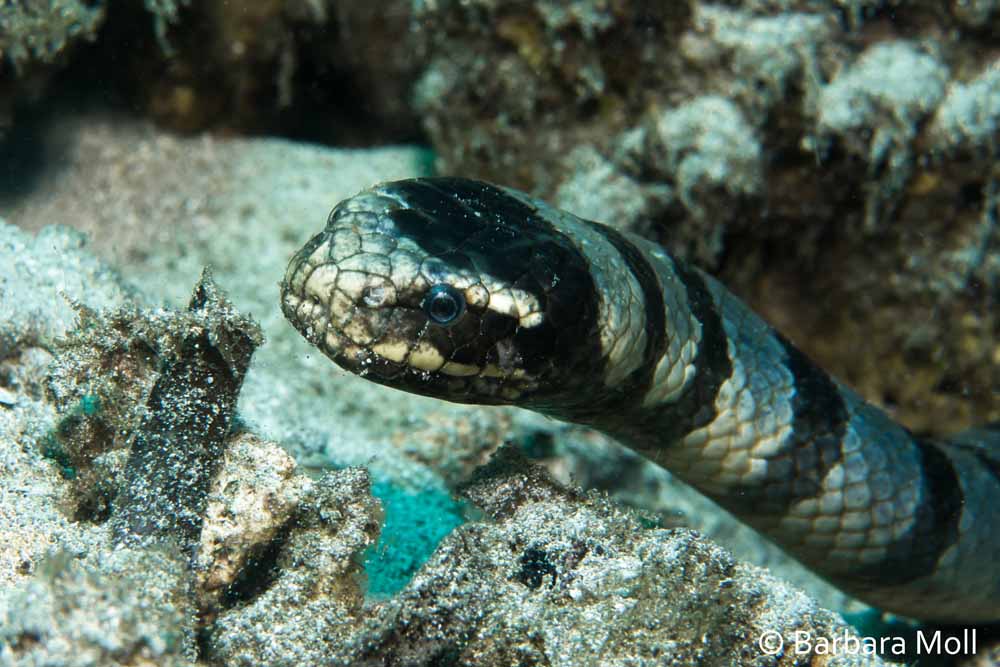
While most people call this species the “banded sea krait”, it is also known as the “banded sea snake” or the “yellow-lipped sea krait”.
2. Sea Snake Versus Sea Krait Versus Snake
The key distinguishing physical characteristic of sea snakes and kraits compared to land living snakes is in the tail. A sea snake or kraits tail is flattened to give it a paddle-like effect which it uses for swimming through the water.
While true sea snakes spend almost all of their time underwater, sea kraits return to land to digest their prey, rest and to reproduce. Juveniles spend more time in the water than on land whereas adult banded sea kraits spend equal amounts of time underwater as they do terrestrially.
When on land a banded sea krait can only move at around one 5th of the speed it does in the water but most other species of krait and sea snake are entirely stranded on land and cannot move at all.
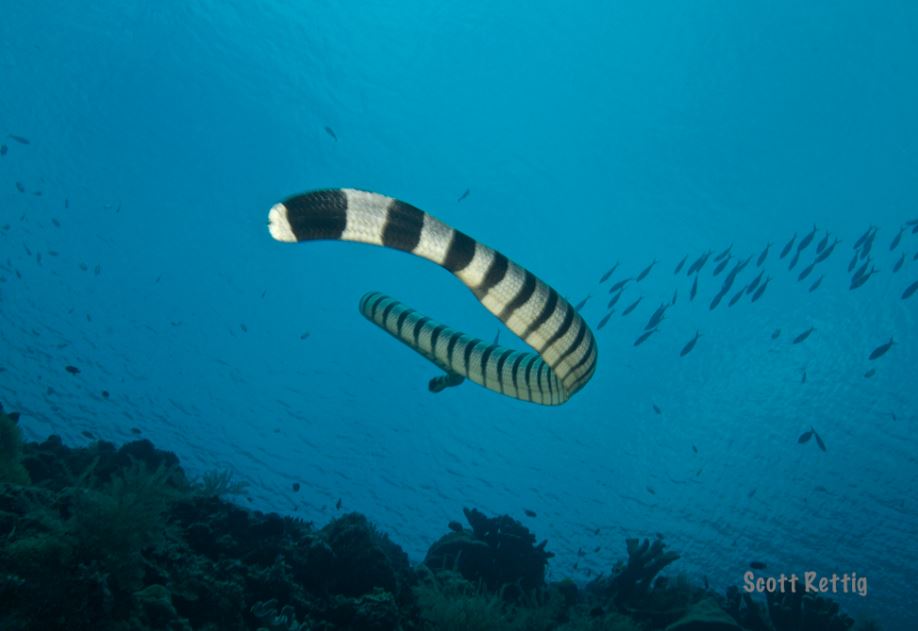
A sea snake or kraits tail is flattened to give it a paddle-like effect which it uses for swimming through the water.
3. The Sizes of Banded Sea Krait
On average, the total length of a male is 87.5cm (34.4 in) long, with a 13cm (5.1 in) long tail. Females are significantly larger, with an average total length of 1.42m (56 in) and a tail length of 14.5cm (5.7 in). Here in North Sulawesi we have spotted females which we estimate to be over 2 meters in length!
4. Banded Sea Krait: Prey and Hunting
Banded sea kraits survive on a diet of mainly eels and some small fish which they catch and paralyse with their very potent neurotoxic venom prior to swallowing them whole. Sea kraits have long slender bodies which make them the perfect size and shape for foraging among the reef and corals in search of eels.
They are vulnerable while hunting especially when their heads are inside branching corals but they are only preyed upon by sharks, some larger fish and some birds (when they are at the surface). They are able to fool some predators into thinking that their tail is their head because the color and movement of the tail and head are very similar.
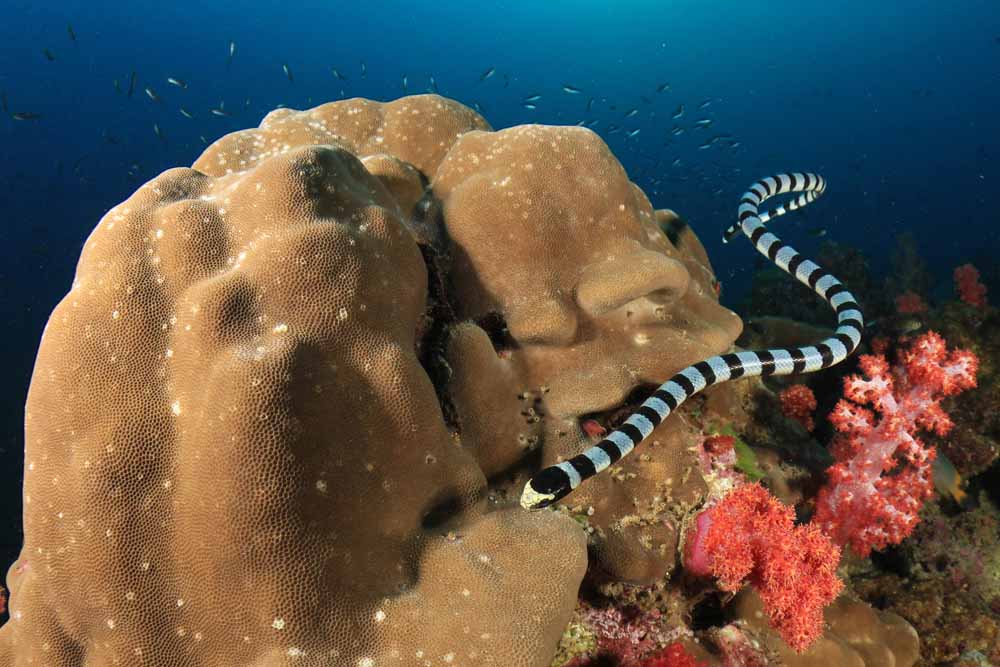
Sea Snakes have long slender bodies which make them the perfect size and shape for foraging among the reef and corals in search of eels
5. Venom, Attacks, and Bites : Sea Krait
The neurotoxic venom of the banded sea krait makes it among one of the most lethal creatures in our oceans and its venom is 10 times more powerful than that of a rattle snake. The venom attacks the nervous system of the victim and can result in convulsions, paralysis, cardiac failure and even death. Each krait can produce up to 10 – 15mg of venom. Only a fraction of the amount produced will result in a lethal dose, however, this species is extremely docile, non-aggressive and does not attack unless in self-defence.
There have been reports of bites in the past and these have been almost entirely sustained by fisherman who has accidently caught a banded sea krait in a net and has been attempting to free it or simply did not know it was there and lifted it out by hand. There is an old saying that this species cannot open its jaw wide enough to bite a human but this is not true. Like all snakes, it is able to open its mouth extremely wide – wide enough to swallow a moray eel whole!
For a deeper dive into the dazzling and dangerous depths of North Sulawesi’s venomous wonders, explore our comprehensive guide: Discover the Venomous Sea Creatures Found in Bunaken, Manado, and Bangka
6. The Sea Krait of Homing Behaviour
A lesser-known fact about the banded sea krait is that it exhibits “philopatry” which means, just like with sea turtles, it will return to the same beach time and time again to digest, rest and lay eggs. A research project carried out in Fiji involved moving a population of sea kraits away from their “home” island to several other islands around 5km away. Within 31 days, all sea kraits that were moved had made their way back to their original island beach!
7. Mating and Reproduction
Banded sea kraits return to their breeding grounds to mate – often migrating long distances to do so. Mating occurs in the water whereby the male will “chase” the female until he become entwined with her.
Mating occurs as he aligns himself along the body of the female. Females produce and lay eggs in clutches of up to 10 individual eggs. The females return to the beach to lay eggs which they will deposit in a nest in a crevice or underneath ledges. The incubation period is 4 months at which point juvenile sea kraits will hatch and make their way to shallow waters.
8. Murex Dive Sites for Banded Sea Kraits
One of the best dive sites for seeing banded sea kraits in North Sulawesi is the Murex Manado House Reef. This shallow dive site is a great place for spotting male individuals which prefer to hunt in depths of less than 10 meters, unlike the larger females which dive deeper. Manado Tua dive sites are also excellent for sea krait sightings and in particular for seeing larger female individuals.
We hope that now you know more about these docile amphibians you’ll enjoy seeing them at some of our incredible dive sites around Manado, Bunaken and Bangka.
Unravel North Sulawesi’s Underwater: Your Passport to Paradise Awaits
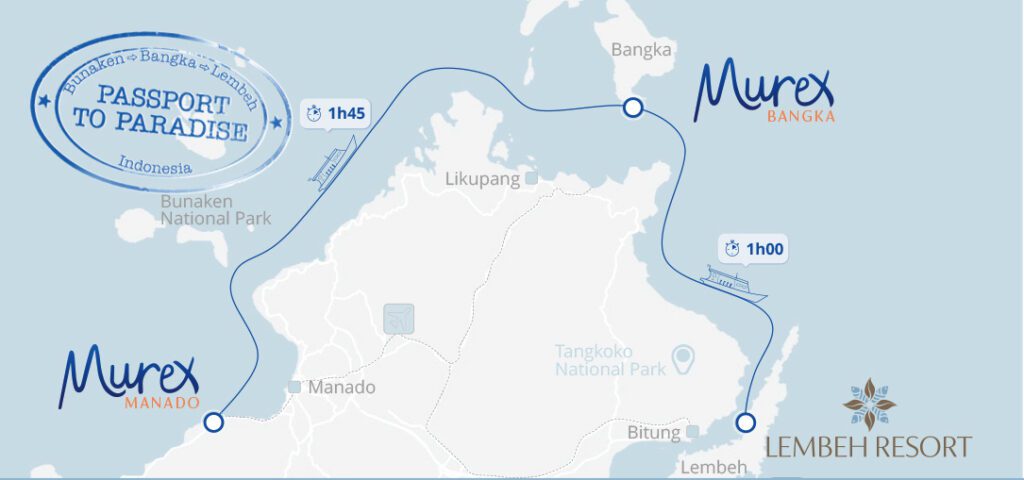
Three distinct destinations brought together by Passport to Paradise
Dive deeper into North Sulawesi’s wonders with Murex Resorts’ Passport to Paradise package. With over 150 dive sites, seamless transfers, and personalized service, experience North Sulawesi’s breathtaking realm like never before.
Our team of Dive Guides love to talk about marine life and are excellent spotters so just let them know what you are hoping to see when you are here in the resort.
Explore three distinct dive destinations – Bunaken, Bangka, and Lembeh. Ready to dive into your own North Sulawesi adventure? Check our rates or contact our friendly team: reservation@murexresorts.com and start planning your underwater odyssey today!
We look forward to welcoming you to Murex Dive Resorts soon!


